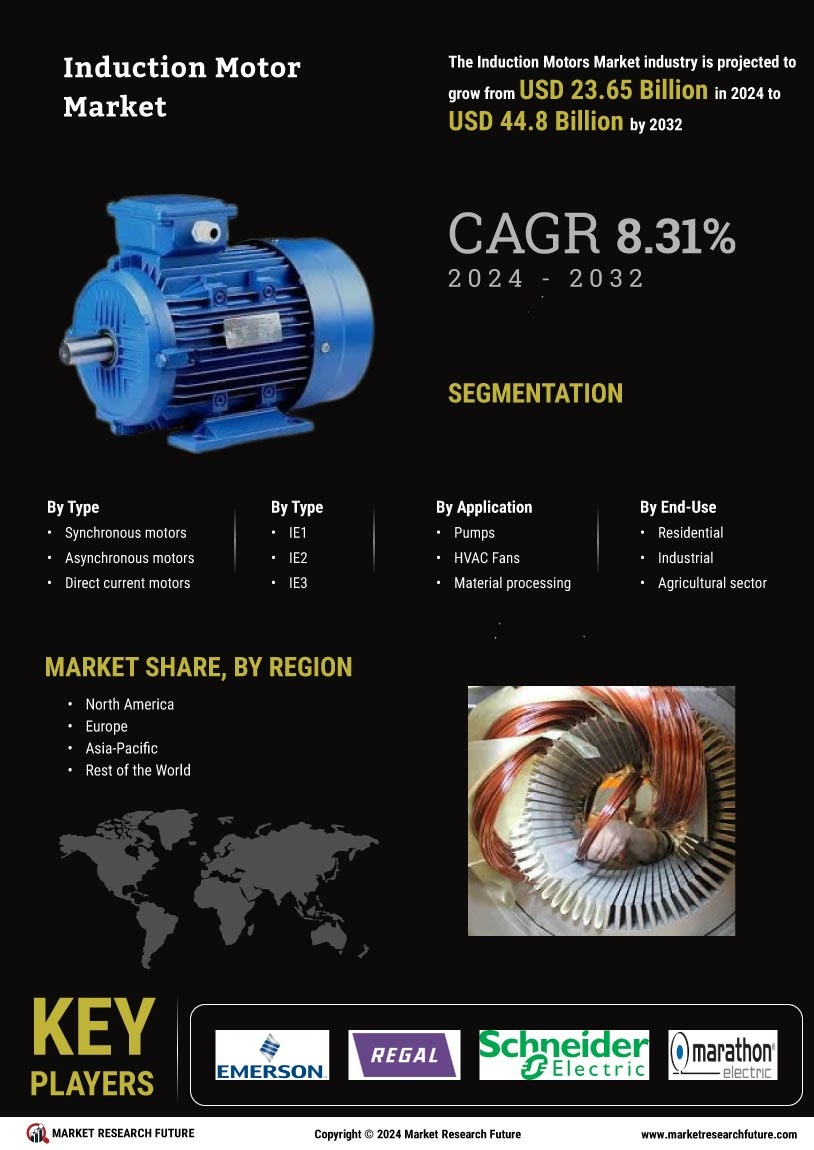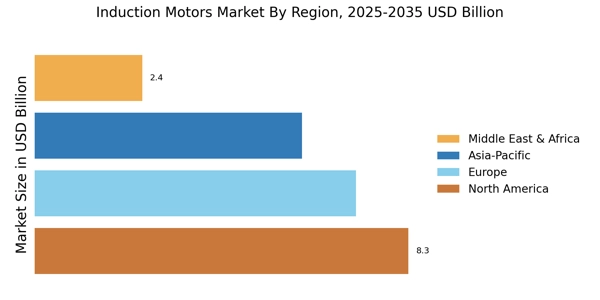In June 2021,The European Union introduced new regulations to improve the energy efficiency of electric motors. The new guidelines, which apply to AC induction motors, amend the previous regulation from 2009 and include motors with power ratings ranging from 0.12 kW to 1000 kW.
In June 2022,Nidec Corporation introduced SynRA (Synchronous Reluctance Motor with Aluminium Cage Rotor), a high-efficiency synchronous reluctance (SR) motor with an aluminium cage that combines an SR motor with the basic principles of a cage-type induction motor, for the US market. When activated, Nidec's SynRA rotates as an induction motor, produces less loss, and achieves higher efficiency than cage-type induction motors.
In June 2023,ABB has developed the new generation AMI 5800 NEMA modular induction motor to offer exceptional energy efficiency and reliability in demanding applications such as pumps, compressors, fans, extruders, conveyors and crushers. the AMI 5800 offers the capability for a high degree of modularity and customization to suit both new build and upgrade projects in a wide range of industries including chemical oil and gas.The AMI 5800 motor is a true NEMA design that builds on ABB’s technology leadership in the North American market to meet both electrical performance requirements and mechanical mounting standards.
In July 2023,The US motor-maker Ideal Electric has acquired the Louis Allis Large Synchronous Machines and Louis Allis Large Induction Motors Market product lines of the former Louis Allis Company of Milwaukee, Wisconsin. The financial terms of the deal have not been disclosed.
February 2024
World-first liquid-cooled IE5 SynRM induction motor from ABB establishes energy efficiency and power output standards.
ABB launched a new version of its IE5 SynRM (synchronous reluctance motor) series that combines ultra-high energy efficiency with liquid cooling, a global first. The innovative design redefines great power and dependability in a small package.
In new projects or as drop-in replacements for less efficient motors, IE5 SynRM Liquid-cooled motors may reduce energy expenditures and emissions. They fit maritime propulsion, rubber and plastics, and food and beverage sectors.
The IE5 SynRM Liquid-cooled motors are more efficient than conventional liquid-cooled induction motors and give room for energy-saving technologies. The cost of energy to power an electric motor during its life accounts for 97% of its total cost of ownership (TCO), with the purchase cost accounting for 2%. Energy efficiency is key to optimizing TCO. Common IE3 motors lose 40% more energy than IE5 motors. Selecting an IE5 motor over an IE3 motor frequently pays for itself in less than a year.
Highly efficient cooling, the cool SynRM rotor, and cooling ribs on the bearing assembly lower bearing operating temperatures, improving reliability. This extends the life of this crucial component and reduces maintenance.
With tight seals and a smooth exterior, the motors are durable. This makes them ideal for maritime propulsion systems and thrusters that need great power density in a small size. Since the motors don't require fans or ventilation, they don't disrupt the air or emit heat. Airflow-sensitive operations like rubber and plastics manufacture and chocolate conche machines benefit greatly from this. Motors without fans reduce noise, improving the workplace.
Stefan Floeck, ABB Division President IEC Low Voltage Motors, says: “ABB pioneered SynRM technology and liquid cooling for induction motors. After combining them, our IE5 SynRM Liquid-cooled motor gives clients ultra-premium efficiency in more applications. We launched our IE5 SynRM Increased Safety motor for hazardous places, and this is another world-first for this series.”


















Leave a Comment